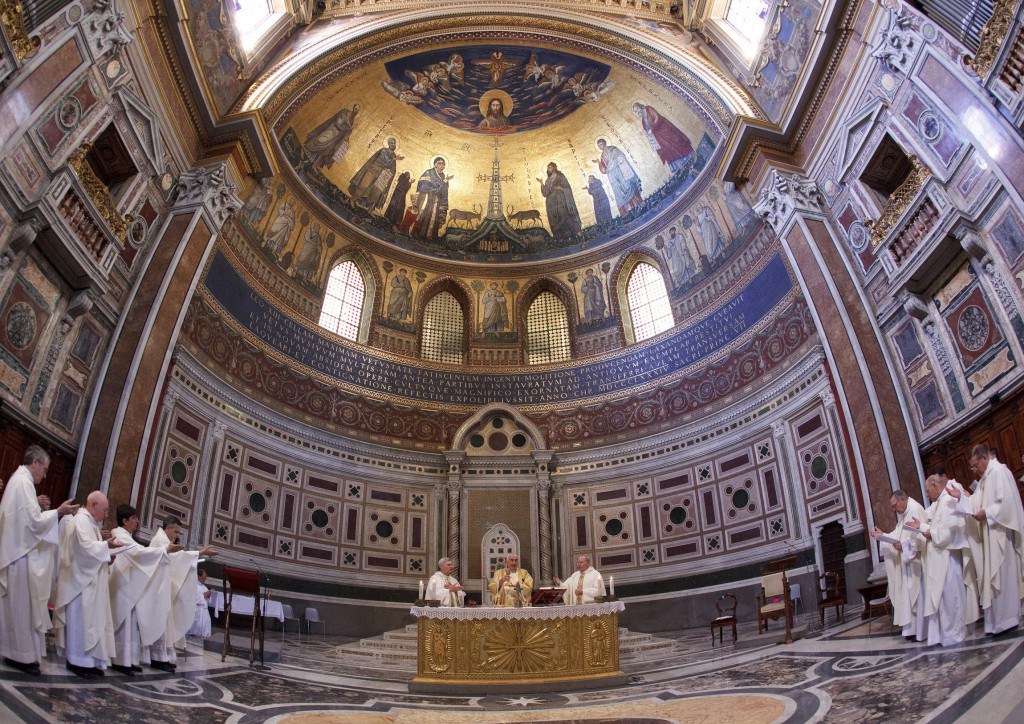
By Francis X. Rocca
Since his first public remarks on the night of his election March 13, Pope Francis has impressed many observers with a marked preference for describing himself not as the pope but as the bishop of Rome — a role he was scheduled to assume in a special way April 7 by celebrating his first Mass in the city’s cathedral, the Basilica of St. John Lateran.
While emphasizing his diocesan identity — which is essentially symbolic, since most of his ordinary episcopal responsibilities are fulfilled by papal vicar for Rome, Cardinal Agostino Vallini — Pope Francis has not sought to downplay his role as pastor of the universal church. In various talks over his first weeks in office, the pope has repeatedly focused on what he deems some of the most urgent global challenges for the church and humanity today, including poverty, war, environmental pollution and moral relativism.
Yet Pope Francis could have several other reasons for highlighting his role as a diocesan bishop. He may wish to signal that his pontificate will be marked by a highly pastoral agenda — which, far from keeping him occupied with local affairs, might well lead him to travel widely as an evangelical missionary in the mold of Blessed John Paul II.
By reminding his fellow bishops that he is one of them, the pope may also be underscoring his commitment to the principle of collegiality, i.e., shared governance of the church by all the world’s bishops in communion with the pope.
Whatever he may be intending, Pope Francis’ prominent references to Rome are reminders that the papacy is historically linked to a specific place, people and civilization (or series of civilizations). In Christian teaching, after all, while the church is ultimately not of this world, it is called in the meantime to be very much of it.
Fittingly, the cathedral of Rome is as a kind of monument to the church’s tumultuous coexistence with secular power through the millennia.
Around the time of his legalization of Christianity in 313, the Emperor Constantine gave the land on which St. John Lateran now stands (he is honored by a statue in the basilica’s portico today). The church was built not on the site of a miracle or a martyr’s burial, as with the city’s other major basilicas, but on ground formerly dedicated to profane uses: a military barracks and the palace of a prominent pagan family, the Laterani.
In a surviving portion of the ancient papal palace, two mosaics illustrate a medieval ideal of ecclesiastical and temporal rulers, both wielding God-given power: Christ gives St. Peter the keys of heaven and earth, and Constantine a banner symbolizing his authority as emperor; St. Peter gives a stole to the early ninth-century Pope Leo III and a banner to his contemporary Emperor Charlemagne.
This vision of harmony did not always describe reality, to say the least, and the Lateran’s thousand-year run as the residence of the popes ended with the “Babylonian captivity” of the Avignon papacy, from 1309 to 1376, when the popes lived in France under the influence of French kings — and the Lateran palace fell into decay. After the papacy returned to Rome, the city’s bishops never moved back to the Lateran.
Ironically, French heads of state today enjoy a singular privilege at the Lateran, as honorary canons of the basilica, a tradition that began with King Henry IV (1553-1610), whose conversion from Protestantism made possible his ascent to the throne. In 2007, then-President Nicolas Sarkozy gave a widely noted speech at the Lateran, arguing that his strongly secular nation should not deny its Christian roots.
The Lateran gave its name to the 1929 pacts between the Holy See and the Italian state guaranteeing the sovereignty of Vatican City State. Since then, the term “Vatican” has been practically a synonym for the papacy. But as the vicissitudes of the Lateran make clear, such associations are not among the church’s eternal truths, merely part of its rich and illuminating history. – CNS